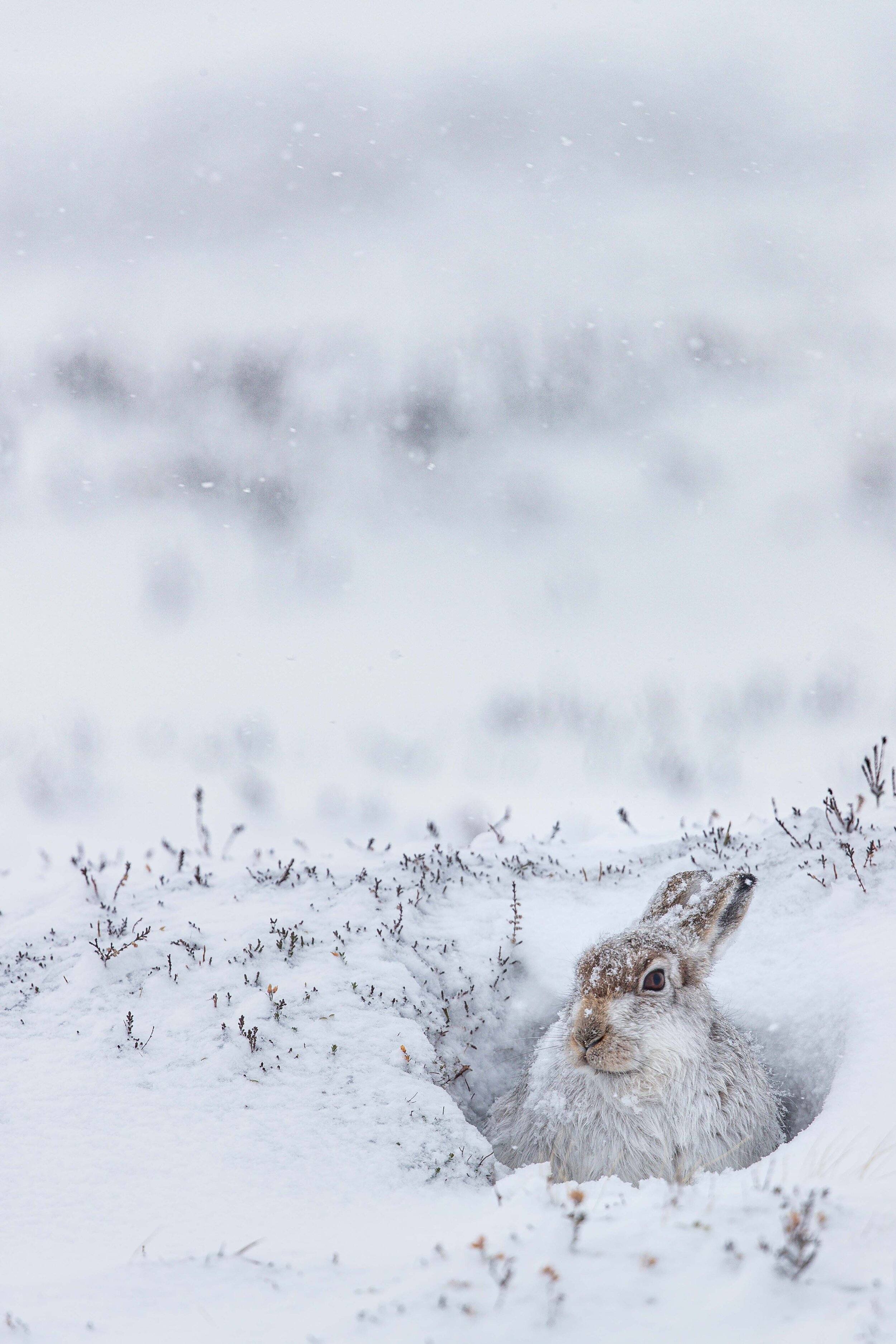Mountain Hare …
There is something rather magical about lying in recently settled snow high on the slopes of the Cairngorms, whilst sharing that space with Mountain Hares. It allows for a moment of reflection, leaving you feeling (albeit for a moment) in tune with the natural world.
Bones dating from around 120,000 years have been discovered in both the Joint Mitnor cave in Devon and in the Thames Valley, suggesting they were once widespread. Today, their indigenous range is sadly confined to Scotland, but reintroduced populations can be found on the Isle of Man and the Peak District. They were also introduced to the Snowdonia National Park, but this population unfortunately died out.
In the second half of the 20th century, the Mountain Hare population on moorland sites decreased by nearly 5% year-on-year, with ecologists attributing this to the planting of conifer plantations on former grouse moors. The turn of the millennium has brought an increase to the scale of this decline, with a decrease of 30% year-on-year! This has led to populations sizing less than 1% of original levels in 1954, according to a survey in 2017. In recent decades commercial Red Grouse populations have been hit hard by the louping-ill virus (LIV), transmitted by the Sheep Tick, Ixodes ricinus. Mountain Hares have been implicated in the spread of this disease, thus culling intensified by those with a monetary interest in the 1990s. This is despite studies suggesting there is no evidence that such culling helps control LIV. In 2018 it was revealed that up to 38,000 mountain hares are killed on Scottish shooting estates each year, which is a truly shocking statistic.
They are a wonderful species, and one we must do our utmost to protect, so please support the organisations involved in their conservation, so we can all have that incredible experience of sharing a mountainside with them for many years to come.
Update, Thursday, 18th June 2020
Excellent news from Scotland last night as the Scottish parliament voted to give the Mountain Hare special protection under the Wildlife and Countryside Act. It will now be an offence to intentionally or recklessly kill or injure the hare without a licence. At last some common sense prevails.
https://www.theguardian.com/environment/2020/jun/18/scotland-to-ban-mass-culling-of-mountain-hares?CMP=twt_a-environment_b-gdneco [Accessed, 18th June 2020].
References:
Howard, A. (2018). The Secret Life of the Mountain Hare. Inverness, Sandstone Press.
https://www.onekind.scot/campaigns/mountain-hares/ [Accessed, 30th April 2020].
http://hare-preservation-trust.com/species-status/mountain-hare/ [Accessed, 30th April 2020].
https://www.mammal.org.uk/species-hub/full-species-hub/discover-mammals/species-mountain-hare/ [Accessed, 29th April 2020].
https://www.theguardian.com/environment/2018/aug/14/scotlands-mountain-hare-population-severe-decline/ [Accessed, 29th April 2020].
https://www.scotsman.com/news/scottish-news/calls-immediate-halt-scottish-mountain-hare-cull-protect-species-1409282/ [Accessed, 30th April 2020].
